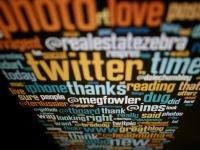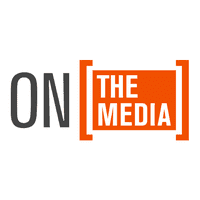The Point of Twitter

From WNYC in New York, this is NPR's On the Media. Brooke Gladstone is away this week. I'm Bob Garfield. It wasn't that long ago that the mini-blogging application Twitter was at least as big a punch line as it was a social media utility.
[CLIP]:
JON STEWART: This week, Twitter!
[DRUMBEAT][AUDIENCE LAUGHTER] For the uninitiated, here's how Twitter works. I have no [BLEEP]-in’ idea.
[LAUGHTER] I have no idea how it works.
[LAUGHTER] Or why it is.
[END CLIP]
BOB GARFIELD: Well, there is something kind of hilarious about people constantly interrupting their lives to transmit 140-character factoids and random banal thoughts to people who must interrupt their own lives to receive them. Or anyway, it was hilarious way back in 2009 when The Daily Show made fun of it. In 2010 there are an excess of 75 million Twitterers, 15 million of them active ones, sending out more than a billion tweets per month. Last week in New York City, Twitterers from the world over gathered at the 140 Character Conference to consider how all this chirping is changing their lives, and ours, too. I went over there, but first wanted to check with this guy I know who is a very satisfied Twitter bug.
DAVID CARR: It’s a way that people use to make sense of a very complicated world.
BOB GARFIELD: David Carr covers media for The New York Times.
DAVID CARR: In that maddening moment when you’re standing at Starbuck’s, right, and the person just won't make your latte, no matter what you do, all of a sudden you drift off into Twitter, and when you look up five minutes later and your drink is finally done, you’re a little bit smarter for it.
BOB GARFIELD: A real time reflection of the Zeitgeist.
DAVID CARR: Well, Zeitgeist plus information. It can get you ahead of the news cycle, which is a pretty handy thing when you’re a reporter. You know, things blow up on Twitter frequently before they show up in the media.
BOB GARFIELD: Yeah well, a frightening percentage of tweets do concern totally super cute teen idol Justin Bieber. It turns out that Twitter is extremely useful for staying abreast of and covering and producing actual news. Carr says he’s often sent out a tweet asking if anybody knows anything about such-and-such, and gathers sources just like that. Twitter also has a funny way of actually affecting the very news being reported on. In Moldova last year, the Tweetosphere became a 140-character echo chamber, in which tweets about unrest in Chisinau generated immediate ex-pat support for unrest in Chisinau. Amid chaos, the value of the so-called real time Web can be incalculable, because even the vaunted 24-hour news cycle is slower than right now.
JEFF PULVER: When Haiti happened, my friend Ann Curry was down there reporting for NBC, and she had noticed that Doctors without Borders had a plane that - with some supplies and the U.S. Air Force wasn't, wasn’t letting it land.
BOB GARFIELD: Internet entrepreneur and Twitter evangelist Jeff Pulver hosts the 140 Character Conference.
JEFF PULVER: So she put out a tweet at U.S. Air Force, help Doctors without Borders land their plane. I saw that, so I simply re-tweeted @U.S. Air Force, help Doctors without Borders land their plane. Well -
BOB GARFIELD: You and your how many followers?
JEFF PULVER: Three hundred and fifty thousand, and the crazy thing was a minute after I tweeted it, the @U.S. Air Force tweets me back, we’re on it! I was like, mm, okay. When was the last time a [LAUGHS] government agency responded to you?
BOB GARFIELD: So, that’s one obvious utility. But by no means is Twitter just a headline service for earthquakes or revolutions. It’s also increasingly the world’s most expansive heads up engine, thanks to software that condenses Web addresses to fit snugly within the maximum 140-character tweet. David Carr.
DAVID CARR: I have Twitter on my BlackBerry and use it a lot. I was at a conference at Yale not that long ago and everybody had their laptops open. I thought, I always used to have my laptop open, why don't I? And I realized that I don't really surf that much anymore, that relevant links get pushed toward me and then I can look at them and decide whether I want to follow the link or not. And so, you know, the short format means it’s a really great application on a handheld device.
BOB GARFIELD: But why are people feeding him links, to begin with? Well, as the blogosphere and YouTube and Facebook have long since discovered, people simply like to share, not only what they think is cool that you should check out but the reality of what they're doing or seeing or just thinking right this second. Consider Leigh Ferreira, a digital specialist for Ted Conferences. She uses Twitter mainly to stay on top of technology news and reaction to various kinds of software and gizmos. She uses Twitter to monitor technology news and the world at large and is discouraged that the trending topics of the most twittered subjects are extremely heavy on teen idols, sadly light on World Malaria Day.
LEE FERREIRA: Millions of people are dying from a disease that I think 20 dollars could save their lives. So, why do people care more and tweet more about Justin Bieber than malaria? I don't know.
BOB GARFIELD: But then I asked her to tell me the subject of her most recent tweet.
LEE FERREIRA: We were just at lunch. We went for sushi, so I just tweeted that out.
BOB GARFIELD: Wait, wait, wait, wait - you tweeted your sushi?
LEE FERREIRA: Yes. It was a sushi tweet.
BOB GARFIELD: I've got a question.
LEE FERREIRA: Sure.
BOB GARFIELD: Who cares?
LEE FERREIRA: I don't know that anyone - cares. It just, it was a beautiful tray. We were having a fun lunch. We've been at the conference yesterday and today, so it just seemed like a fun thing to tweet.
BOB GARFIELD: Hmm, malaria angst and lunch orders, the terrible and the trivial. What do they have in common? Well, what they have in common is that they are variously in Ferreira’s thoughts, and sharing thoughts is something people do, fulfilling a primal human need for keeping in touch, even virtual touch, with other humans. Conference organizer, Jeff Pulver.
JEFF PULVER: When I was nine years old I was a very lonely person, and I – maybe I’m always lonely forever. But my - I went to my uncle’s office one day and he had this strange radio and he turned it on, and he says, CQ, CQ, this is K2QQM calling CQ. And all of a sudden these squeaky voices started responding to my uncle. And I thought, this is pretty cool [LAUGHS], that these strangers are now talking to my uncle. And I became obsessed between the time I was 9 to about 12½, but I taught myself Morse Code, electronic theory, I taught myself the rules and regulations all about amateur radio. And it took me three years, and that taught me almost everything I needed to know about Twitter today because as a kid growing up who was otherwise alone, I would go up on the radio and say, hi, CQ, CQ, this is WA2BOT calling CQ and standing by. And in high school, junior high school, I would spend 40, 60 hours a week on the radio. And that was my lifeline. That was where I connected. And all I had to say is I was Jeff from New York, and it didn't matter how old I was, it didn't matter what I did for a living. I had this. And now all these years later, six o'clock in the morning to seven o'clock in the morning, every day, wherever I am in the world, I'm online. But instead of saying, CQ, CQ, I say, good morning. And a magical thing happens every day.
BOB GARFIELD: The magical, exciting, calming, life-affirming charge of human contact. Sociologist Elizabeth Pullen has made a study of Twitter’s attractions. The main one, she says, is community, and especially communal experience.
[BACKGROUND VOICES]
ELIZABETH PULLEN: The most popular events are live events that are televised, that people are watching Miss America or the Oscars or European soccer, football games and tweeting about live events while they're happening. And that’s just kind of interesting to me - that people want to share the moment. I guess they're sitting and, you know, half watching television, half just saying, look at that goal that this Real Madrid, you know, scored, or something like that. So that’s kind of a communal experience shared online that I don't think the people at Twitter ever anticipated.
BOB GARFIELD: You know who does understand that? Here’s who:
MAN: Kosha Dillz and Flex Mathews.
BOB GARFIELD: Just to see what the social media could do for a rap act, the pair commandeered an audience microphone at last month’s South by Southwest Conference in Austin.
[KOSHA AND/OR FLEX RAPPING]
KOSHA OR FLEX: And the whole place erupted. About 100 video cameras came out and it went viral completely. And it was just, you know, guerilla marketing and basically, you know, utilizing Twitter, which was a live Twitter feed. And all we did was just do what we do anyway.
BOB GARFIELD: They pulled the stunt to improve their business, and this just in: Twitter has become a valuable resource for others to do exactly the same thing. The real time Web, whether Twitter or some successor, will have a vast effect on the new economy. The Tweetgeist, it turns out, offers real time intelligence on what consumers are thinking about. On Thursday, it was Earth Day, the NFL draft and, curiously enough, Justin Bieber. But data mining is like any other. The deeper you dig, the more value you bring to the service, and that value is enormous.
FREDERIC GUARINO: For brands, for political parties, NGOs, charities - anyone with an audience on social media who’s looking to make sense of it.
BOB GARFIELD: Frederic Guarino is chief marketing officer for KeenKong, a new entry in the burgeoning field of social media analytics. KeenKong’s new platform enables marketers to learn not only what people are tweeting about brands, but to characterize that buzz into 19 categories, anger, dislike, and so on. I asked Guarino and his partner Olivier Berger to look at the chatter about Toyota, which is mired in a recall disaster.
FREDERIC GUARINO: What we're seeing - so we, we have about 5,000 conversations that referenced Toyota on Twitter since March 22nd, and we're actually only seeing about 25 that are clear - dislikes.
OLIVIER BERGER: You know, there’s a lot of people asking questions, directly or indirectly, about Toyota.
FREDERIC GUARINO: Yeah.
OLIVIER BERGER: They should answer back to them.
FREDERIC GUARINO: And they don't.
OLIVIER BERGER: And they don't.
BOB GARFIELD: This is quite the cultural leap for gigantic corporations that hitherto were able to massage public opinion by flooding the marketplace with advertising. Amid the fragmentation and ongoing collapse of mass media, now they're finding themselves dealing with the public one tweet at a time. Twitter, the company, is counting on it. Clearly, the service is loved by its users and clearly the data trove is a goldmine for business, whether the majority of the business world has figured that out or not. But how will Twitter itself cash in? It has now begun selling advertising on Twitter Search Results, a business it hopes will be a cash cow in the same 10-billion-dollar pasture as Google Search. It may be a quixotic hope. Google searchers, after all, are looking for information about things. Twitter searchers are looking for information about sentiment about things. Uh-Oh! But, as Josh Bernoff of Forrester Research points out, Twitter had better be able to find some revenue, somehow, because neither utility nor even ubiquity guarantees financial reward.
JOSH BERNOFF: There’s only a limited supply of venture capital that’s willing to subsidize things that don't have any business model.
BOB GARFIELD: Maybe somebody needs to tweet not the U.S. Air Force but the Fortune 500: Help yourself by helping us save Twitter now. RAPPER FLEX MATHEWS: [RAPPING] Yeah, what’s all this about when I stomp the comp at the number sign 140 Conference? We could –
[RAP UP AND UNDER]

